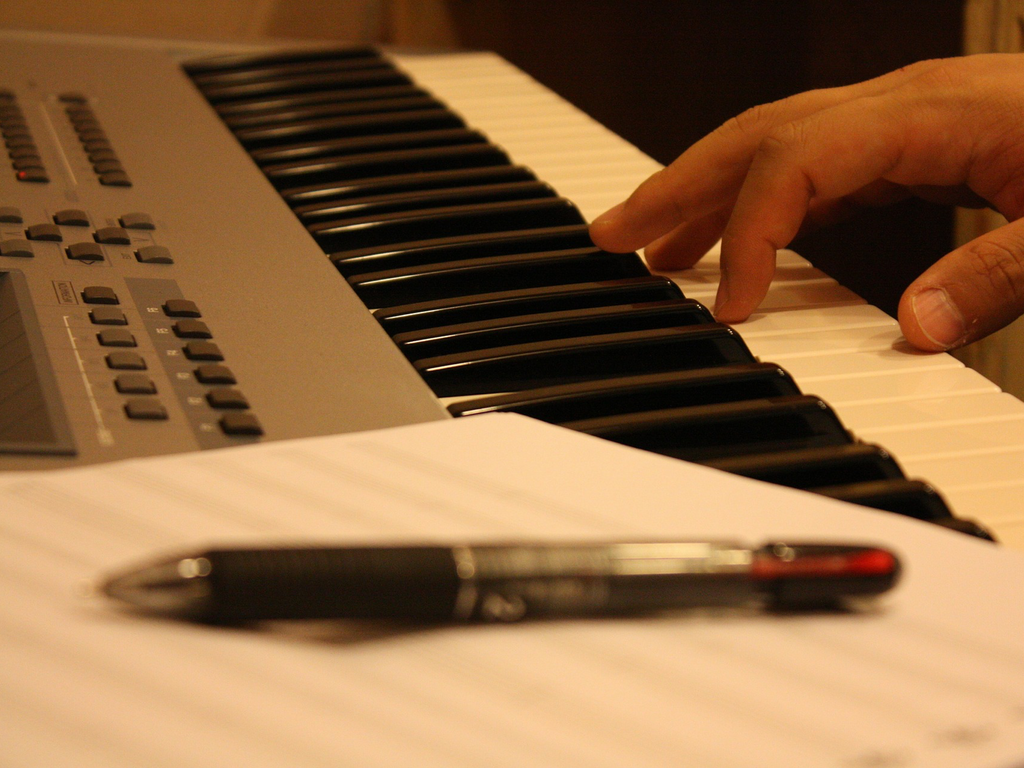You know you don’t need to be a music theory buff to be able to change the key of your songs. In this post is a link below to a PDF cheat sheet to make the job easier.
If you have sheet music or a chord chart and want to sing the song in a higher or lower key then below are the steps for you to do this.
Identify the melody notes you want to sing higher or lower. It maybe that the highest note or lowest note in the song are out of your range, or maybe you are singing a song originally sung by the opposite sex and need to raise or lower the key to your range.
Here is an example of how to use the chart.

The top note in the original melody is a D5 (red). The singer wants to sing a lower note, say a B4 (green).
- Identify the key signature of the piece.

If you have the sheet music then its the # and ♭symbols on the left hand side of the staves. If there aren’t and then you are in C major (or A minor)
If all you have is a chord chart then most commonly it’s the final chord of the song (If not then find someone to help you identify the key)
The Transposition Chart indicates all common key signatures on the right hand side.
Say you see 3♭s (this is E♭major).

2. Find the E♭major row
3. Then the letter D in that row
4. Follow D’s column up or down till you get to B
5. Now you will be in the new key = C major
6. All the chords and melody notes can now be transposed into this new key.
For example say the first 4 chords of the song are:
| Gmin7 | Cmin7 | Gmin7 | B♭7 | E♭ma7 | then in the new key you would be:
|Emin7 | Amin7 | Dmin7 | G7 | Cmaj7
NB: only the letter changes not the chord type e.g. min7, 7 or maj7)
7. The same with melody notes. e.g. | D, C, B♭, A♭, G, A♭| becomes |B, A, G, F, E, F |. Once again it is only the note names that change not the rhythms.
Here is a chart with the keyboard notes and names, and the corresponding notation.
Click here to download the Transposition Chart
Hope it helps!
Line


